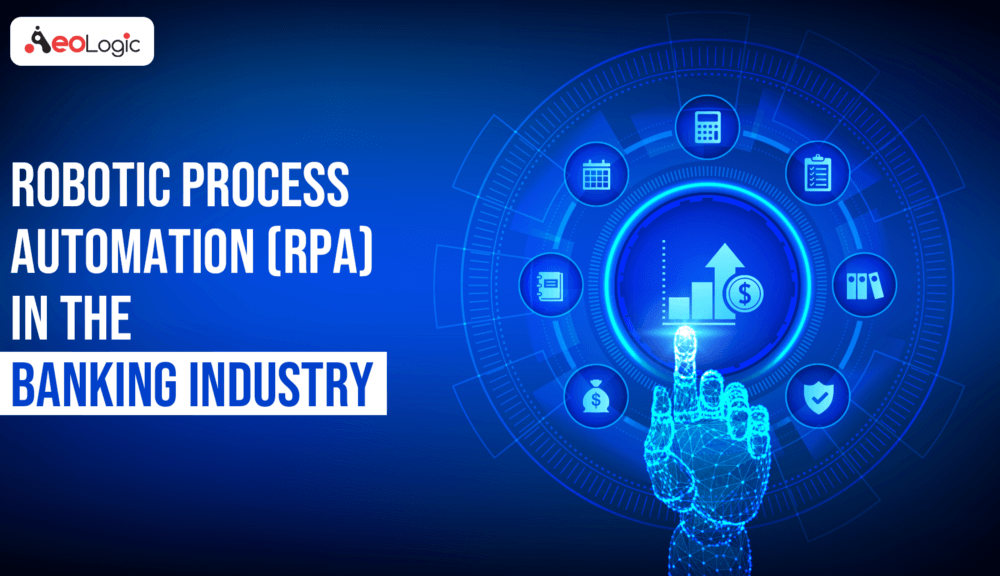The banking industry is a saturated market, and banks have had to explore and adopt the latest technologies to provide the best customer experience in order to stay competitive in this market. The banking industry has always faced a challenge to maintain security in order to maximize efficiency as cost-effectively as possible. For meeting these demands and overcoming these challenges, RPA has come out to be a very powerful and effective tool for banks to gain advantage in this modern race of digital transformation.
Here in this article, we will try to get to know the very nature of Robotic Process Automation, it’s innovation in banking, and how RPA can help banks multiply the efficiency for the proper functioning of tasks.
What is Robotic Process Automation?
Robotic process automation (RPA), often confused as Artificial intelligence(AI), is actually the use of software with a combination of artificial intelligence (AI) and machine learning (ML) technologies to handle and perform high-volume, repeatable tasks that would earlier require a human to do. Such tasks can be anything from queries, calculations, or maintaining records and transactions.
RPA enables an organization to implement the technology in a quick and efficient manner— and all this without changing the existing IT infrastructure and system of the company. What makes the RPA strand out from traditional IT automation is the ability to adapt and to be aware of the changing circumstances, exceptions, and new situations.
Significance of RPA in the Banking Industry
As we discussed earlier in the article, that RPA addresses and resolves the challenge of gaining efficiency while keeping the cost as low as possible. But when it comes to talking about the Banking Industry in particular, the challenge comes with the complexity of maintaining security level. To meet these demands and to overcome the challenge, RPA has become the most effective tool to forward the transition from service-through-labor to service-through-software.
Increasingly, the financial sector has adopted robotic process automation — in the UK, most of the banks now integrate web robots for data accuracy and to increase the overall efficiency. And all this while lowering the costs and eliminating the risk of security threats and breaches.
Simply put, Web robots are nothing but software applications designed and made to emulate what a human can do, but faster, more accurately and error-free.
The Benefits of using RPA in the Banking Industry
RPA has proven to be a massive business benefit across all industries. It helps reduce employee workload, costs, and lowers the time it takes to complete tasks manually. Automation’s acceptance in the finance industry is rapidly rising, especially when it’s paired with Artificial Intelligence. According to a recent report, the implementation of AI in banks could potentially result in $416 billion cost cuts across industries.
There are a lot of benefits of having RPA in the banks. Let’s have a look at some of the main benefits that RPA has:
- Service Level Agreement improves for the customer
- Improves customer Experience
- Saves cost for repetitive and manual tasks
- Enhances customer satisfaction by processing loans faster.
- Adheres to the compliance rules
- Promotes staff efficiency
- Decreases cost and increase profitability
- Enhances the process with No or Minimal errors.
Summing Up
As of 2020, a lot of banks and financial institutions have already implemented RPA in their IT infrastructure and their operations, as RPA serves more opportunistic solutions that are easy to implement.
RPA or Robotic Process Automation, If implemented properly, can result in transforming the banking sector by automating all the manual, repetitive, and time-consuming tasks. As a result of automating such tasks will be seen in the form of productivity enhancement and error rate reduction. Which are beneficial for both banks and their customers.
Read Related –
Transformation of the logistics and supply chain sector with AI, IoT, and RPA






